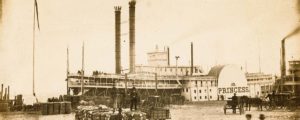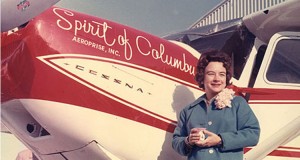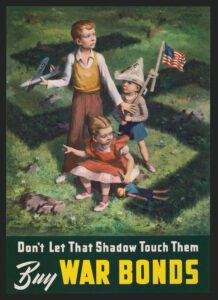Although today’s travelers and commuters may pass them on a regular basis, few among the post-World War II generation are aware of the remarkable display of friendship between the United States and her oldest ally, France, that is represented by the strange-looking little boxcars—called Merci Trains—that can be seen in such diverse places as the Montana state capitol grounds in Helena; outside the American Legion Post in Helms, Arkansas; and at Pennsylvania’s Fort Indiantown Gap.
In 1947, the people of France and Italy were still struggling to recover from the devastation of World War II. In an effort to help, American newspaper columnist Drew Pearson spearheaded a fundraising campaign to provide them with food, clothing, and other necessities. Americans contributed generously to the purely grassroots effort, filling an “American Friendship Train” with $40 million in relief supplies.
Touched by this response to their need, the French answered with a program of their own. The idea originated with Andre Picard, a veteran and railroad employee, who suggested that a boxcar be filled with gifts from every part of France and sent to the United States as a gesture of gratitude.
The boxcar he had in mind was a “Forty and Eight,” so-called because it could carry forty men or eight horses. The stubby—20.5 feet long, 8.5 feet wide—old wooden cars had been used to transport U.S. troops from place to place within France during both world wars. Although memories of those rides were not always pleasant, the cars nonetheless gave their name to a fraternity formed within the American Legion—La Societe des Quarante Hommes et Huit Chevaux—in 1920.
Picard’s idea led to the creation of a committee to solicit enough gifts to fill one boxcar. But response exceeded all expectations, and it soon became obvious that a single boxcar could not hold all the items. The French War Veterans Association assumed control of the project and decided to try to fill 49 boxcars, one for every state then in the Union and one for the District of Columbia and Hawaii.
In all, 52,000 gifts, weighing 250 tons and ranging from a Louis XV carriage to children’s drawings to tree seedlings were collected during 1948 and crammed into the railroad cars, which were then loaded aboard the freighter Megellan at Le Havre for their transatlantic journey.
The ship, with “Merci, America” adorning its sides, received a royal welcome in New York harbor on February 3, 1949.Congress had passed a resolution allowing the gifts to enter the country duty-free, and longshoremen volunteered their services to bring the cars ashore. Of too narrow a gauge for American rails, the cars were loaded onto flatcars for delivery, at no charge, by the nation’s railroads to state capitals across the country.
On reaching their destinations, the cars were greeted by dignitaries at special ceremonies. Their contents, after being displayed for a time, were distributed in a variety of ways. Many were sold at auction, with the proceeds going to charity, while some especially significant items went to public institutions.
Unfortunately, few of the gifts lovingly placed in the cars by the citizens of France can be traced today. But, those cars that have survived vandalism and the ravages of time testify to a great expression of friendship and caring between two nations and their peoples who fought side by side for a common goal half a century ago
Originally featured as Time Capsule: Objects in History Oct. ’95 American History magazine feature. For more stories, subscribe here.





